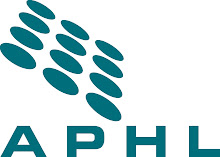 Dr. Norman Crouch, is a well known figure in the APHL community. Earlier this year, after 16 years with the Minnesota Department of Health, Dr. Crouch announced his retirement. As laboratory director and assistant commissioner, Dr. Crouch worked closely with APHL, serving as a member-at-large and secretary/treasurer on APHL’s board of directors, APHL president from 2003-2004, and a member of numerous APHL committees. The post below is adapted from the keynote address he gave at APHL’s 2009 Annual Meeting.
Dr. Norman Crouch, is a well known figure in the APHL community. Earlier this year, after 16 years with the Minnesota Department of Health, Dr. Crouch announced his retirement. As laboratory director and assistant commissioner, Dr. Crouch worked closely with APHL, serving as a member-at-large and secretary/treasurer on APHL’s board of directors, APHL president from 2003-2004, and a member of numerous APHL committees. The post below is adapted from the keynote address he gave at APHL’s 2009 Annual Meeting. I believe these are exciting times for state and local public health laboratories. Despite current difficulties caused by severe budgetary reductions that impact operations, as well as workforce training and recruitment, our laboratories in public health have entered a new frontier. Major changes are occurring to accommodate advanced technology and address increasingly complex health threats caused by natural, accidental, and deliberate public exposure to infectious or toxic biological and chemical agents. Today, our public health laboratories play a key role in emergency preparedness and response, food and water safety, and the expansion of newborn screening. It is becoming increasingly clear to both governmental and private sectors that our health laboratories play a unique and essential role in protecting the public.
Based on experience as a state public health laboratory director, I believe this new frontier embraces a significant change in laboratory culture. In the past, most public health laboratories were described as being independent, focused on providing routine and rare laboratory services to support public health-related programs. As the role of the public health laboratory has changed in response to technology and need, the laboratory culture has become one of interdependent connectivity and high expectation. There’s been a shift from the independent analytical testing of the past to an innovative culture of communication, collaboration, and cooperation with a multitude of essential partners. Today’s partners include (1) infectious disease and environmental epidemiologists, (2) sentinel clinical laboratories, (3) local and state first responders, (4) other state agencies, (5) numerous federal agencies, and (6) state and local health officials. This connectivity, I believe, will be a major strength for our public health laboratories in the future. Such connectivity will result in better understanding of the public health laboratory’s value, giving our laboratories a priority status not experienced in the recent past, which will foster robust inter-partner advocacy essential for sustaining laboratory operations relevant to public health and safety.
To convince key partners of the value of our public health laboratories, we must continually demonstrate that our mission is markedly different from other laboratories, and that our laboratories are indispensible in the broad scheme of health protection. To be convincing, our laboratories must show their value, not just say it is so. We must show our partners strong professional leadership, our worth to the public health cause, and our willingness and ability to go beyond expectations.
In a sense, this is a “golden time” for public health laboratories. With recent national food borne disease outbreaks detected by our PulseNet laboratories, with our laboratory response to rapid introduction of the novel H1N1 influenza virus, with the widely recognized critical role of our national Laboratory Response Network in biological and chemical surveillance, with our leading effort to expand newborn screening, and with the construction of new, high-tech laboratory facilities, public health laboratories are in the spotlight. Even the public now awaits identification or confirmation of an unknown biological or chemical agent in samples sent to the public health laboratory for analysis. They know this is critical information that determines what actions will be taken to protect their health and keep them safe. Additionally, each state now recognizes the importance of expanded newborn screening to detect treatable inborn errors of metabolism and congenital defects.
With this current visibility, I believe our public health laboratories are viewed with respect and high expectation. By continuing to demonstrate that our unique operations are indispensible for local, state, and national health protection, our public health laboratories will survive and thrive in this new frontier.




